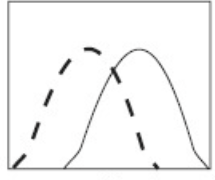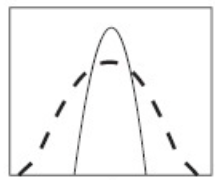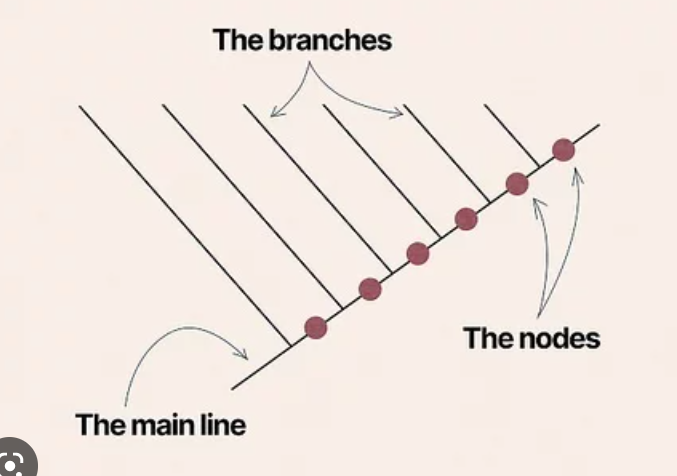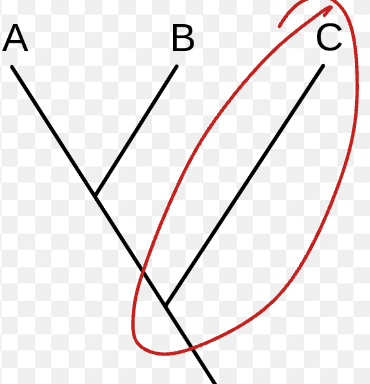AP Bio Unit 7: Natural Selection
5.0(1)
5.0(1)
Card Sorting
1/64
Earn XP
Description and Tags
Study Analytics
Name | Mastery | Learn | Test | Matching | Spaced |
|---|
No study sessions yet.
65 Terms
1
New cards
biogeography
the geographic distribution of species
2
New cards
evolution
change in the genetic makeup of a population overtime; descent with modification
3
New cards
natural selection
a process in which individuals that have certain traits tend to survive and reproduce at higher rates than other individuals because of their traits
4
New cards
artifical selection
the selective breeding of domesticated plants and animals to encourage the occurrence of desirable traits
5
New cards
population
a group of individuals of the same species that live in the same area and interbreed to produce fertile offspring
6
New cards
gene pool
a population genetic makeup; consists of all copies of every type of allele
7
New cards
microevolution
small scale genetic changes in a population
8
New cards
genetic drift
chance events that cause a change in allele frequency
9
New cards
bottleneck effect
when a large population is drastically reduced by a non-selective disaster
10
New cards
founder effect
when a few individuals become isolated from a large population and establish a small population with a gene pool that differs from the large population
11
New cards
gene flow
the transfer of alleles into or out of a population due to fertile individuals or gametes
12
New cards
relative fitness
the number of surviving offspring that an individual produced compared to others left in population
13
New cards

directional selection
selection on the extreme towards one phenotype
14
New cards

stabilizing selection
selection towards the mean away from extremes
15
New cards

disruptive selection
selection against the mean and towards the extremes
16
New cards
sexual selection
a type of natural selection that explains why many species have showy unique traits; selection for mating based on certain traits (affects fitness)
17
New cards
Hardy-Weinberg Equilibrium
a model used to assess whether natural selection or other factors are causing evolution at a particular locus
18
New cards
Hardy-Weinberg principle
frequency of alleles and genotypes in a population will be remain constant from generation to generation provided that ONLY Mendelian segregation and recombination of alleles are at work
19
New cards
five conditions of Hardy-Weinberg equlibrium
* No mutation
* No gene flow
* No natural selection
* Random mating
* Large population size
* No gene flow
* No natural selection
* Random mating
* Large population size
20
New cards
fossils
remains or traces of past organism
21
New cards
fossil record
gives a visual of evolutionary change overtime
22
New cards
comparative morphology
analysis of the structure of living and extinct organisms
23
New cards
homology
characteristics in related species that have similarities even if structures differ
24
New cards
vestigial structures
structures that are conserved even though they no longer have a use
25
New cards
molecular homology
similarities in DNA and AA sequencing between species
26
New cards
homologous structures
characteristics that are similar in 2 species because they have a common ancestor
27
New cards
convergent evolution
similar adaptation that have evolved in distantly related organisms due to similar selection presures
28
New cards
analogous structures
structures that are similar but have separate evolutionary origins
29
New cards
biogeography
the distribution of animals and plants geographically
30
New cards
systematics
classification of organisms and determining their evolutionary relationships
31
New cards
taxonomy
naming and classifying species
32
New cards

phylogentic trees
diagrams that represent the evolutionary history of a group of organisms
33
New cards

node
branching point; represents common ancestors
34
New cards

sister taxa
two clades that emerge from the same node
35
New cards

bassal taxum
a lineage that evolved from the root and remains unbranched
36
New cards
synapomorphy
a derived trait shown by clade member
37
New cards
derived charateristic
similarly inherited from the most recent common ancestor of an entire group
38
New cards
ancestral characteristic
similar trait that arose prior to common ansestor
39
New cards
outgroup
a lineage that is least closely related to the rest of the organisms
40
New cards
monophyletic group
includes the most recent common ancestor of the group and all its descendants (clade)
41
New cards
paraphyletic group
includes the most recent common ansestor but not all of it’s desendents
42
New cards
polyphyletic group
does not include most recent common ancestor of all members of the group
43
New cards
species
a group able to interbreed and produce viable offspring
44
New cards
speciation
formation of a new species
45
New cards
allopatric speciation
physical barrier divides population or a smaller group of the population is separated from the main population preventing gene flow
46
New cards
sympatric speciation
a new species evolved while still inhabiting the geographic regions of the ancestral species, usually due to the exploration of a new niche
47
New cards
2 types of reproductive isolation
prezygotic and postzygotic barriers
48
New cards
prezygotic barriers
prevent mating or hinder fertilization
49
New cards
habitat isolation
species live in different areas or occupy different habitats in the same area
50
New cards
temporal isolation
species breed at different times of the day, year or season
51
New cards
behavioral isolation
unique behavioral patterns and rituals separate species (sexual selection)
52
New cards
mechanical isolation
the reproductive anatomy of species does not fit the anatomy of another
53
New cards
genetic isolation
proteins on the surface of gametes do not allow for sperm and egg to fuse
54
New cards
reduced hybrid viability
the genes of different parent species many interact in a way that impair the hybrids development or survival
55
New cards
reduced hybrid fertility
a hybrid can develop into a healthy adult but is sterile
56
New cards
hybrid breakdown
the hybrid of the first generation may be fertile, but when they mate with a parent species or one another, their offspring will be sterile
57
New cards
microevolution
change in allele frequencies within a single species or population
58
New cards
macroevoltion
large evolutionary patterns
59
New cards
stasis
no change over long periods of time
60
New cards
punctuated equilibrium
when evolution occurs rapidly after long periods of statis
61
New cards
gradualism
when evolution occurs slowly over hundreds, thousands or millions of years
62
New cards
divergent evolution
groups with the same common ancestor evolve and accumulate differences resulting in the formation of new species (homologous traits)
63
New cards
adaptive radiation
if a habitat or niche becomes available, species can diversify rapidly
64
New cards
convergent evolution
two different species develop similar traits despite having different ancestors (analogus traits)
65
New cards
extinction
the termination of a species